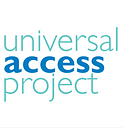Investing In Women’s Reproductive Health: The Value Of $8
By Seema Jalan
Eight dollars can buy a latte for you and a colleague on your coffee break, or a salad at lunch; it can allow you to put a few gallons of gas in your car, or to bring home a fresh bouquet of flowers for the dining room table.
Eight dollars doesn’t seem like very much — but new research shows that it can mean a brighter, more empowered future for a woman in need of access to contraceptives and quality maternal care. Just-released data from the Guttmacher Institute found that meeting the global need for family planning and maternal and newborn health care in developing regions would cost just $8.39 per person per year. Imagine: less than $10 per person to fulfill the essential human right of a woman to plan her family and, if and when she is ready to have a baby, to give birth safely.
But this right is still not a reality for millions of girls and women. The report estimates that 214 million women in developing regions want to avoid pregnancy but — for a variety of reasons — are not using a modern method of contraception. These women with an “unmet need” for modern contraception account for 84% of all unintended pregnancies in developing regions. And, when pregnant, tens of millions of women in these regions do not receive the basic pregnancy and delivery care they need.
Of course, access to contraception and maternal and newborn health care are intricately connected, and the report found that meeting contraception needs alongside providing maternal and newborn care has the greatest impact on women and the greatest return on investment. In fact, every $1 spent on contraceptive services in developing regions saves $2.30 in maternal and newborn health care due to declines in unintended pregnancies — a 130% return.
But this $8.39 per person per year pays off in many non-financial, yet essential, ways, too. At the most basic level, it saves lives: Guttmacher estimates that in 2017, more than 300,000 women in developing countries will die from pregnancy-related causes, and 2.7 million babies will die in the first month of life. Most of these deaths could be prevented if women could plan for and space their pregnancies with access to contraception, and have quality maternal and newborn care if and when they choose to become pregnant. This investment would decrease maternal deaths to a quarter of current levels, newborn deaths to less than one-fifth of current levels, and unintended pregnancies, unplanned births, and induced abortions by roughly three quarters. It would also spur a ripple effect of social and economic benefits for women and their families, allowing them to stay in school longer, reach their potential in the workforce, plan and space their children, and break the cycle of poverty. It’s clear: If we want to reach the global Sustainable Development Goals, we must reach girls and women everywhere with quality reproductive health care.
“Meeting the need for family planning and pregnancy-related health care in developing regions will have a dramatic impact on the lives of millions of women and their families,” says Ann Starrs, President and CEO of the Guttmacher Institute. “Far too many women and newborns still lack access to these essential services.”
More investment by governments, donors, civil society, and individuals is needed to close this gap and break down barriers to quality reproductive health care. Only then can the reproductive health and rights of these 214 million girls and women be fulfilled. For less than the cost of a pizza, we can help a woman become empowered to pursue her hopes and dreams for the future.
Learn more about the Universal Access Project and get involved at www.universalaccessproject.org.
